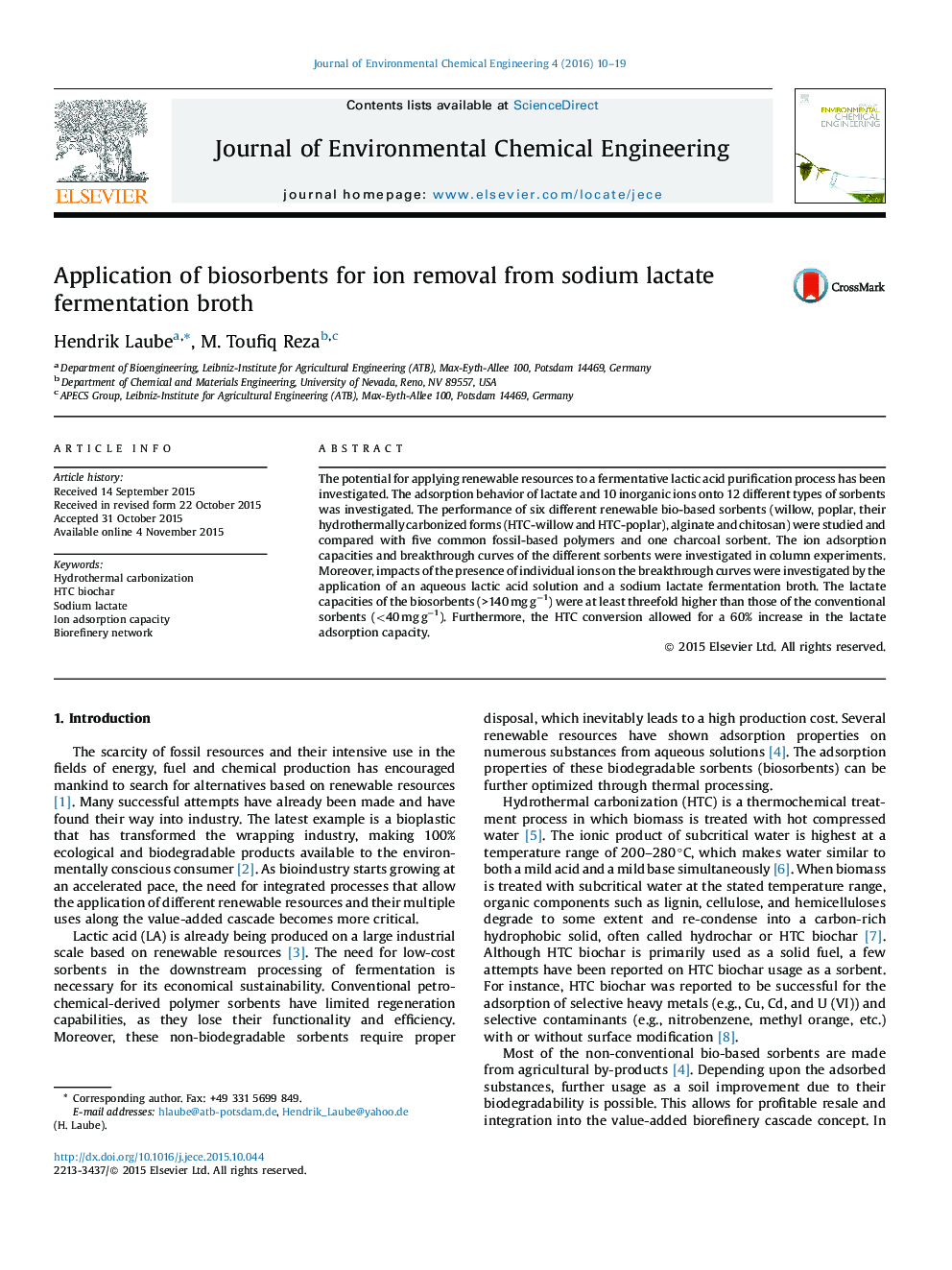| Article ID | Journal | Published Year | Pages | File Type |
|---|---|---|---|---|
| 221854 | Journal of Environmental Chemical Engineering | 2016 | 10 Pages |
The potential for applying renewable resources to a fermentative lactic acid purification process has been investigated. The adsorption behavior of lactate and 10 inorganic ions onto 12 different types of sorbents was investigated. The performance of six different renewable bio-based sorbents (willow, poplar, their hydrothermally carbonized forms (HTC-willow and HTC-poplar), alginate and chitosan) were studied and compared with five common fossil-based polymers and one charcoal sorbent. The ion adsorption capacities and breakthrough curves of the different sorbents were investigated in column experiments. Moreover, impacts of the presence of individual ions on the breakthrough curves were investigated by the application of an aqueous lactic acid solution and a sodium lactate fermentation broth. The lactate capacities of the biosorbents (>140 mg g−1) were at least threefold higher than those of the conventional sorbents (<40 mg g−1). Furthermore, the HTC conversion allowed for a 60% increase in the lactate adsorption capacity.
